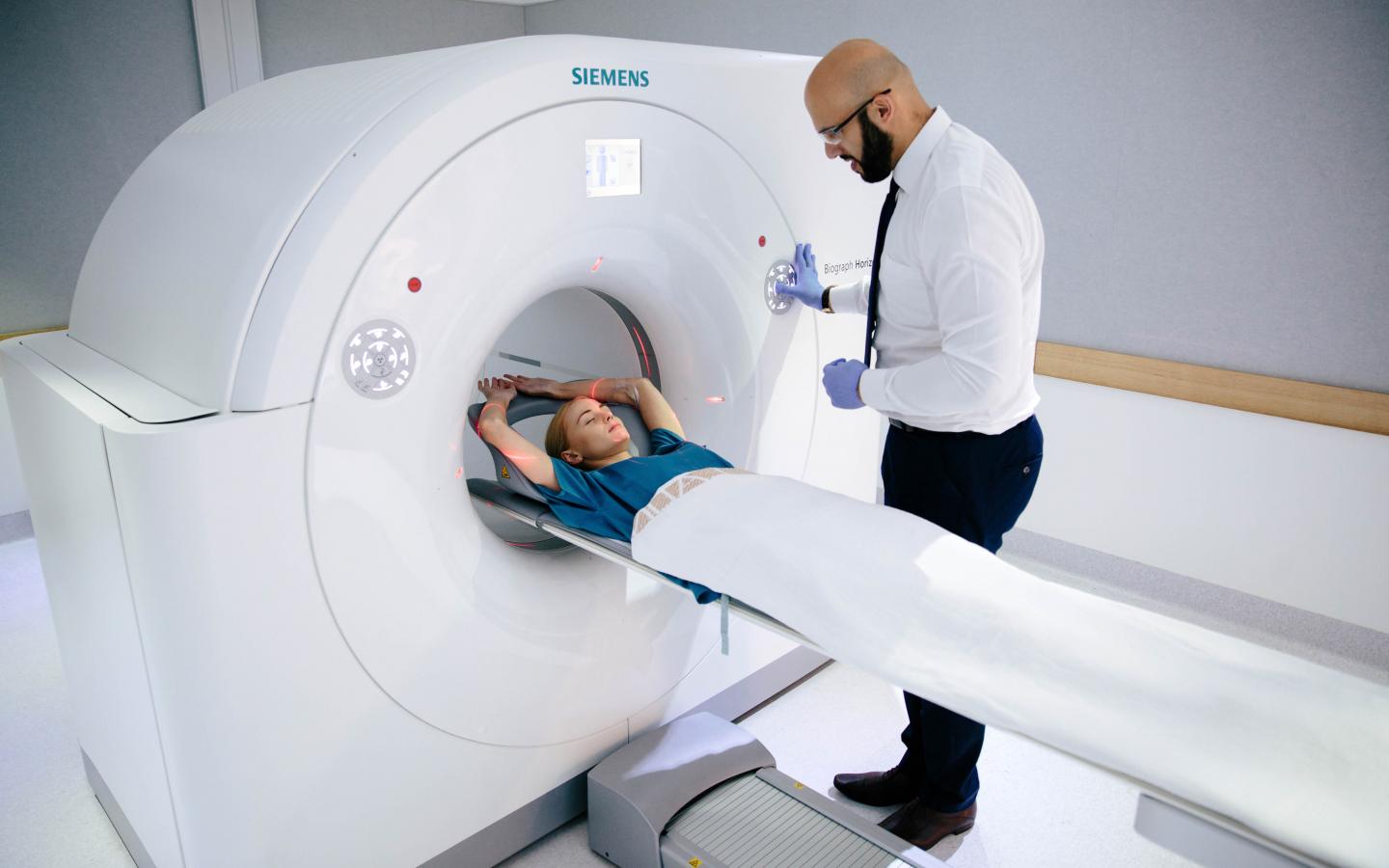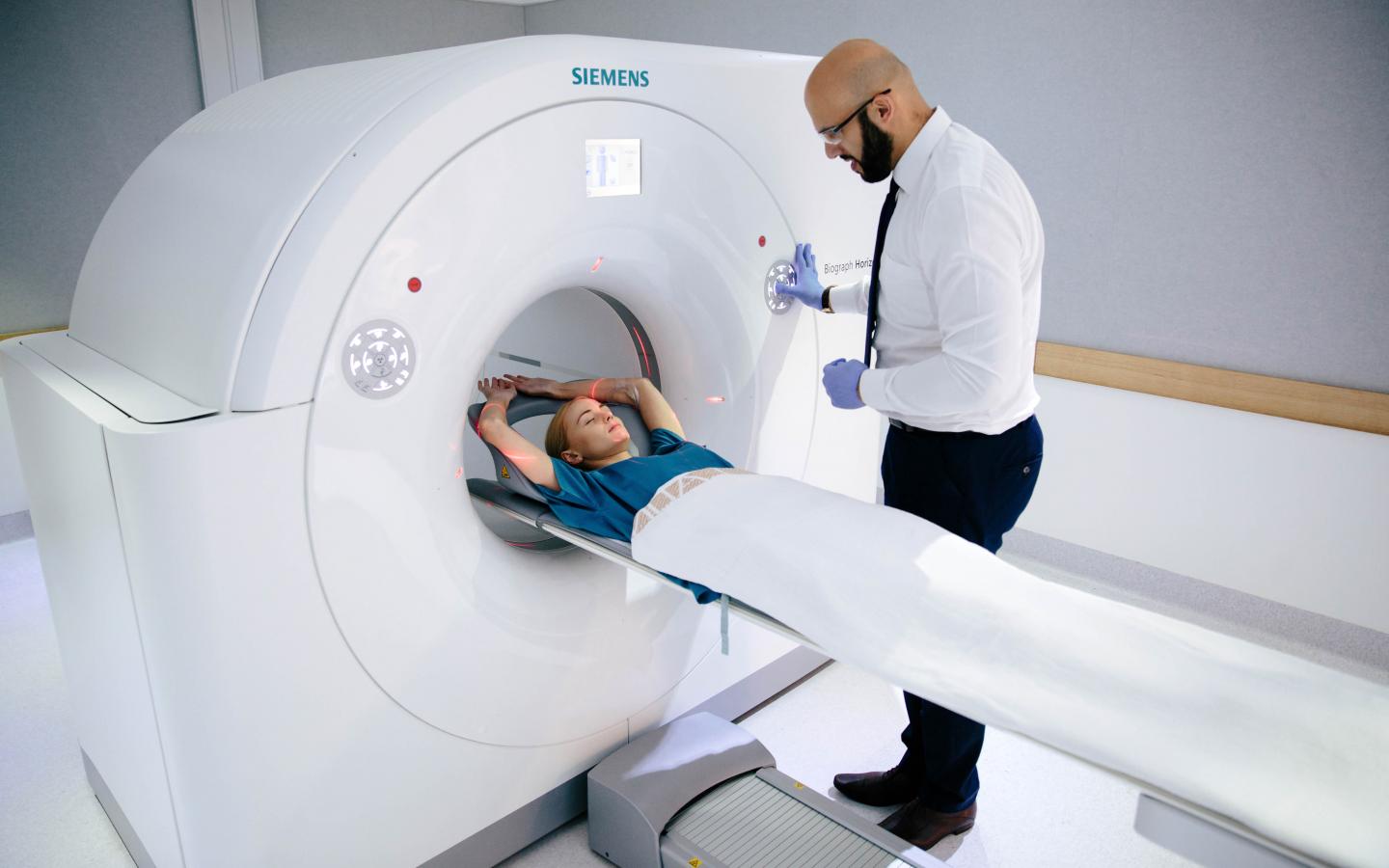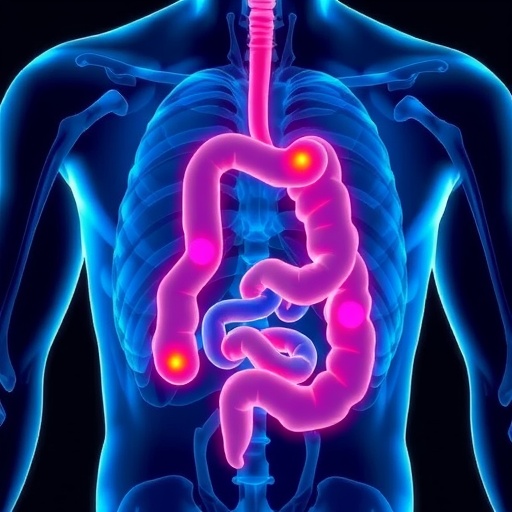
Credit: Centre for Advanced Imaging, University of Queensland
New cancer-fighting drugs could emerge from The University of Queensland in coming years, thanks to a state-of-the-art imaging facility opened today.
A $2.5 million grant from the Australian Cancer Research Foundation (ACRF) enabled the purchase of a large-bore PET-CT scanner and an upgrade of the centre's existing Magnetic Resonance Imaging (MRI) facilities.
The new ACRF Facility for Molecular Imaging Agents in Cancer is housed in UQ's Centre for Advanced Imaging (CAI).
CAI director Professor David Reutens said the facility's opening today would enable "a new paradigm" in comparative oncology by allowing researchers to examine the effects of tiny doses of anti-cancer drugs in both human and animal cancers at a cellular level.
"We are using molecular imaging to improve cancer detection, characterisation, treatment and monitoring," he said.
"The new facility addresses a key issue in enhancing the success of clinical trials on human cancer therapies.
"It also builds on the long-term development of world-class facilities in health and medical bioscience and research in Queensland, linking with other imaging capabilities such as the Herston Imaging Research Facility and the TRI Innovation and Translation Centre.
"Researchers will use naturally occurring cancers in companion animals such as dogs to bridge the gap between conventional preclinical models and human trials, facilitating clinical translation of new drugs, devices, and imaging procedures for human cancers," Professor Reutens said.
He said the CAI's Comparative Oncology research program was the first of its kind in Australia.
Australian Cancer Research Foundation CEO Professor Ian Brown said the ACRF Facility for Molecular Imaging Agents in Cancer offered a new opportunity to better understand cancer in its many forms.
"It provides a chance for the development of new approaches for the prevention, detection and treatment of cancer," he said.
"The ACRF supporters who made this grant possible know that the investment in state-of-the-art technology when placed in the hands of the best researchers will lead to the breakthroughs that we all desire."
"The facility will build on the long-term development of world-class facilities in health and medical bioscience and research in Queensland, linking with other imaging capabilities such as the Herston Imaging Research Facility and the TRI Innovation and Translation Centre.
"Researchers in Australia are among the best in the world and we're delighted to be supporting the cutting-edge work of the teams working together at UQ.
"Research and innovation are our best means of finding ways to end cancer."
###
Media Contact
Nina Moore
[email protected]
61-733-651-785
@uq_news
http://www.uq.edu.au
############
Story Source: Materials provided by Scienmag





